Does the Gender of Cats Affect Socialization?
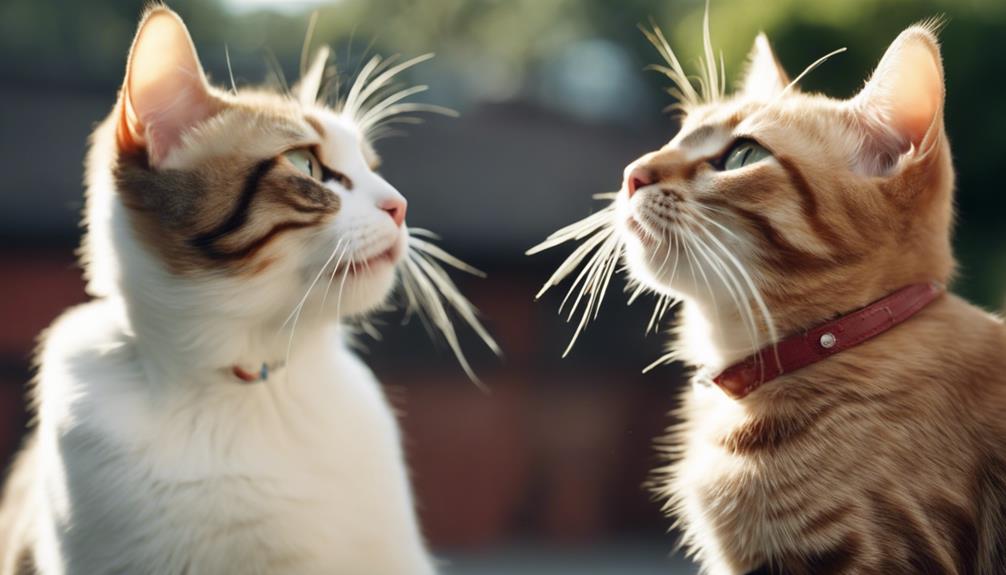
When it comes to socialization, the gender of a cat can have a significant impact on its behavior and interactions with humans and other animals. Male cats are often perceived as more independent and territorial, while female cats are typically seen as more affectionate and nurturing.
However, it's essential to remember that each cat is an individual with its own unique personality, regardless of gender. Factors such as upbringing, environment, and socialization experiences can also play a crucial role in shaping a cat's behavior and temperament.
Understanding these differences can help cat owners better meet their pet's needs and provide a more enriching and fulfilling environment for their feline companions.
Socialization Differences Based on Gender
When socializing cats based on their gender, it's essential to consider their unique behavioral tendencies and communication styles. Gender dynamics play a significant role in how cats interact with others of the same and opposite gender. Female cats tend to be more territorial and establish a hierarchy within their social group. They may display behaviors such as hissing or swatting when feeling threatened or challenged.
On the other hand, male cats often exhibit more dominant behaviors, such as marking their territory with urine or engaging in physical confrontations to establish dominance.
These socialization differences between male and female cats can influence how they interact with humans and other animals in a household. Understanding these gender-specific behaviors is crucial for creating a harmonious living environment for all pets. By recognizing and respecting these differences, pet owners can better cater to the needs of their feline companions and prevent potential conflicts that may arise due to gender dynamics.
Male Cat Social Behavior Analysis
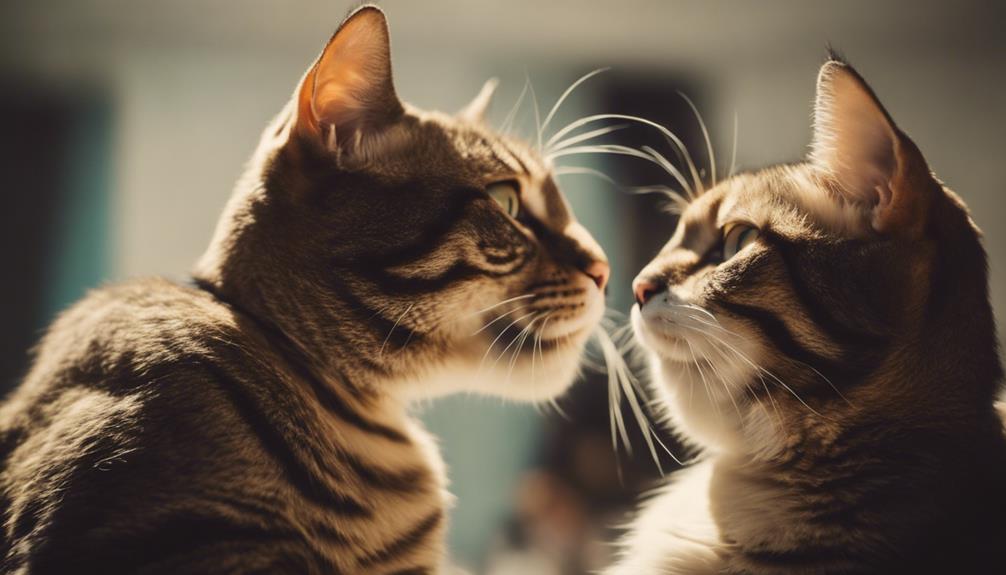
Male cats exhibit distinct social behaviors that contribute to their unique personalities. Their playfulness is often characterized by agility and curiosity, while territoriality showcases their need for dominance and control within their environment.
Additionally, male cats have grooming habits that vary in frequency and intensity, influencing their social interactions with other cats.
Male Cat Playfulness
Playfulness in male cats is a key aspect of their social behavior that contributes to their overall interaction with other cats and their environment. Male cats often exhibit playful antics that showcase their energetic and curious nature. This behavior isn't only entertaining but also serves as a form of communication and bonding with other cats.
Through playful interactions, male cats display their masculine behavior by engaging in activities such as chasing, pouncing, and wrestling. These playful behaviors help male cats establish social hierarchies, relieve stress, and maintain physical fitness. Understanding and encouraging playfulness in male cats is essential for promoting their social development and ensuring a harmonious environment for all feline companions.
Male Cat Territoriality
Territorial behavior in male cats is a fundamental aspect of their social interactions and communication within their environment. Male cats often exhibit aggression as a way to establish and defend their territory. This behavior can be influenced by their innate gender roles in feline socialization, where males tend to assert dominance through territorial displays. Female cats, on the other hand, may display submission behaviors when faced with a territorial male. Understanding these dynamics is crucial for cat owners to manage their pets' interactions effectively. Below is a table summarizing key points regarding male cat territoriality:
| Male Cat Territoriality | |
|---|---|
| Aggression | Male cats assert dominance through territorial aggression. |
| Submission | Female cats may exhibit submission behaviors in response. |
| Gender Roles | Male cats often demonstrate territorial behaviors to establish dominance. |
| Social Dynamics | Territorial behavior can impact interactions between male and female cats. |
Male Cat Grooming Habits
Grooming behavior in male cats serves as a significant aspect of their social interactions and communication within their environment. Male cat bonding dynamics are often reinforced through grooming rituals, where males groom each other as a way to establish and strengthen social bonds.
While grooming is commonly associated with females, males also engage in this behavior to maintain social harmony within their group. Gender specific grooming rituals can vary, with some males being more fastidious groomers than others.
This grooming behavior not only helps in cleaning their fur but also plays a crucial role in maintaining social order and cohesion within the male cat community. Understanding these grooming habits provides insight into the complex social dynamics of male cats.
Female Cat Social Behavior Analysis
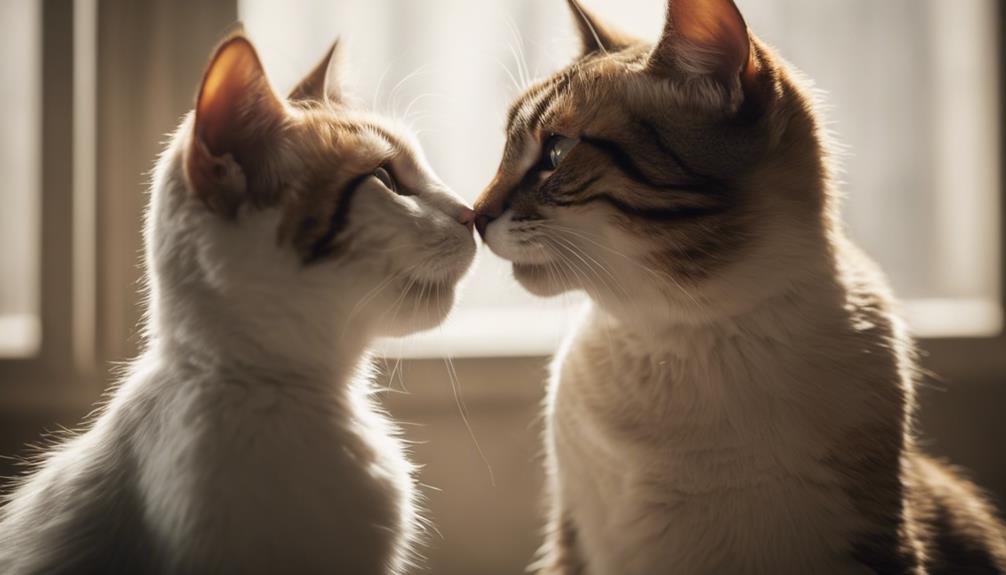
Female cat social behavior analysis focuses on understanding how female cats interact with one another and how their socialization differs from that of male cats.
Observing their communication methods, hierarchy establishment, and bonding rituals provides valuable insights into the unique dynamics within female feline groups.
Exploring these aspects can shed light on the complexities of female cat social structures and enhance our comprehension of their social behaviors.
Female Cat Interactions
In observing the social behavior of female cats, an interesting pattern emerges regarding their communication methods and hierarchies within a group. Female cats often form strong bonds with other cats, particularly within their own gender. This bonding is characterized by mutual grooming, sleeping close together, and engaging in social activities.
However, female cat aggression can also arise, especially when defending territory or asserting dominance. Female cats communicate through various vocalizations, body language, and scent marking. Despite their bonding tendencies, female cats also exhibit independence, seeking solitude at times and displaying self-sufficiency in grooming and hunting.
Understanding these dynamics is crucial for cat owners to foster harmonious interactions among female cats in a group setting.
Socialization Differences
Observing the social dynamics among female cats reveals distinct differences in their socialization behaviors compared to male cats. Female cats often exhibit more intricate social hierarchies and engage in subtle forms of communication to establish and maintain relationships within their group. This behavior aligns with gender dynamics seen in other species where females tend to prioritize cooperation and harmony in social interactions. Socialization theories suggest that these differences stem from evolutionary factors, such as the need for females to work together to protect offspring and secure resources. The table below summarizes key differences in female cat social behavior compared to male cats.
| Socialization Aspect | Female Cats | Male Cats |
|---|---|---|
| Communication Style | Subtle cues and body language | Direct vocalizations and gestures |
| Social Hierarchy | Complex, often based on relationships | More hierarchical based on dominance |
| Conflict Resolution | Avoidance and appeasement behaviors | Direct confrontation and aggression |
Impact of Gender on Social Skills
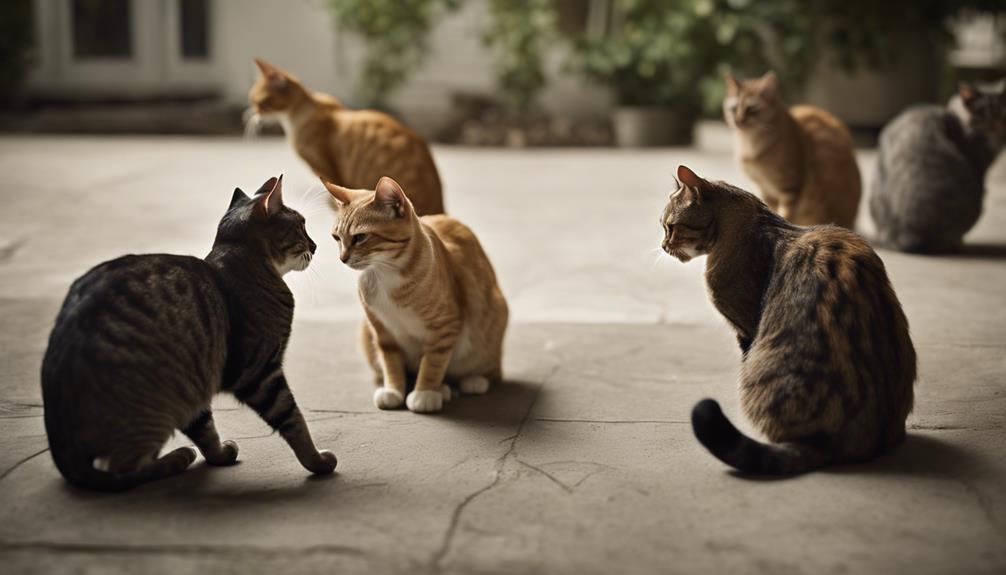
How does the gender of cats influence their development of social skills?
Gender dynamics play a significant role in shaping the social skills of cats. Research suggests that male and female cats may exhibit different social behaviors due to their gender-specific traits. Male cats, known for being more territorial and independent, may display social skills that involve marking their territory and engaging in dominance-related behaviors.
On the other hand, female cats are often seen as more nurturing and sociable, which can influence their social interactions with other cats and humans. These gender differences can impact how cats communicate, establish relationships, and navigate social hierarchies within multi-cat households or community settings.
Understanding these gender-specific social skills can help cat owners provide appropriate socialization opportunities and environments that cater to their pets' individual needs. By recognizing and accommodating these gender influences on social skills, individuals can promote healthy social development and enhance the overall well-being of their feline companions.
Gender Influence on Interactions
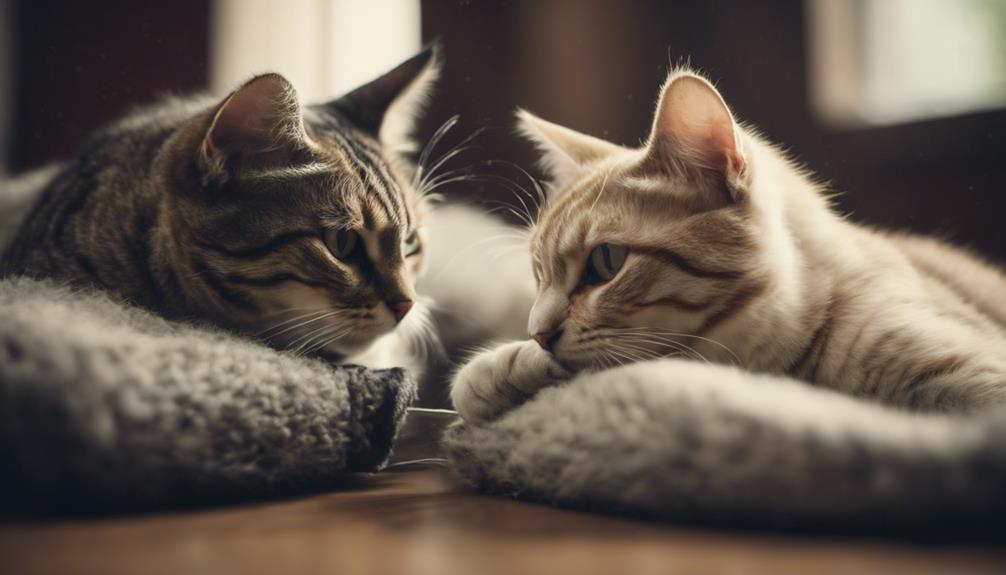
Gender differences in cats can significantly influence their social interactions with other felines and humans. Understanding the gender dynamics in cat interactions can help individuals set realistic socialization expectations for their pets. Here are some key points to consider:
- Play Styles: Male cats tend to engage in rougher play, including chasing and wrestling, while female cats often exhibit more stalking and pouncing behaviors during playtime.
- Territorial Behavior: Male cats may display more territorial aggression, especially towards other males, while females can also be territorial but may exhibit it differently, such as through marking behavior.
- Communication Styles: Male cats may use vocalizations more frequently to communicate, while females may rely more on body language and scent marking to convey messages.
- Human Interactions: Some studies suggest that male cats are more likely to form strong bonds with female owners, while female cats may show equal affection towards both male and female owners.
Understanding these gender influences can aid in creating harmonious interactions between cats and their human companions.
Gender-Specific Socialization Patterns
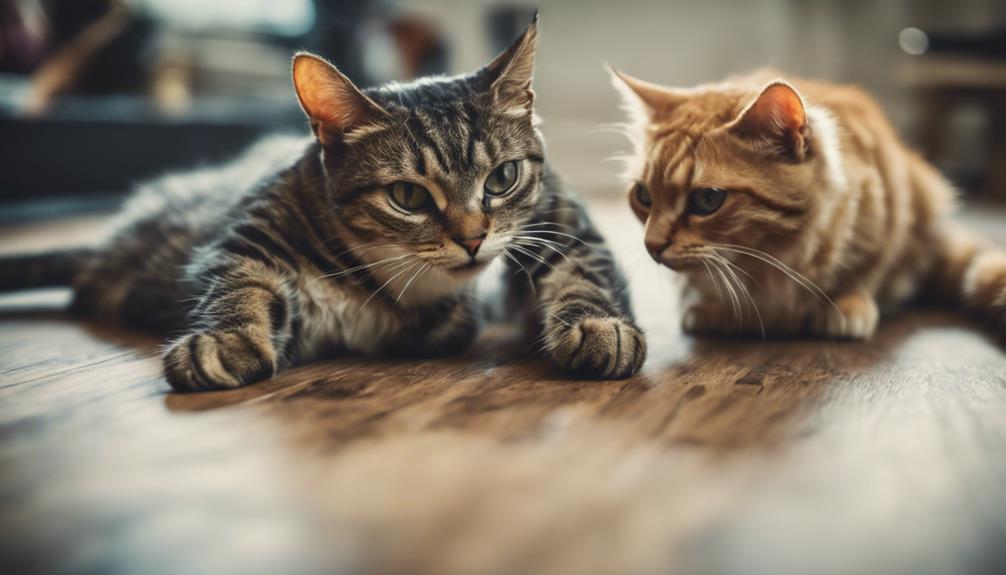
The gender-specific socialization patterns in cats can significantly impact their behavior and interactions with both other cats and humans. When looking at gender dynamics in cats, it is essential to consider how socialization norms play a role in shaping their behaviors. Below is a table outlining some key gender-specific socialization patterns observed in cats:
| Socialization Patterns | Male Cats | Female Cats |
|---|---|---|
| Aggression towards other cats | More common | Less common |
| Social grooming behavior | Less frequent | More frequent |
| Territory marking | More prevalent | Less prevalent |
| Vocalization frequency | Less vocal | More vocal |
| Play style | Rough and tumble | Gentle and stalking |
Understanding these gender-specific socialization patterns can help cat owners tailor their interactions with their pets effectively. By recognizing and accommodating these differences, owners can create a harmonious environment that promotes the well-being of their feline companions.
Gender and Socializing With Humans Vs. Animals
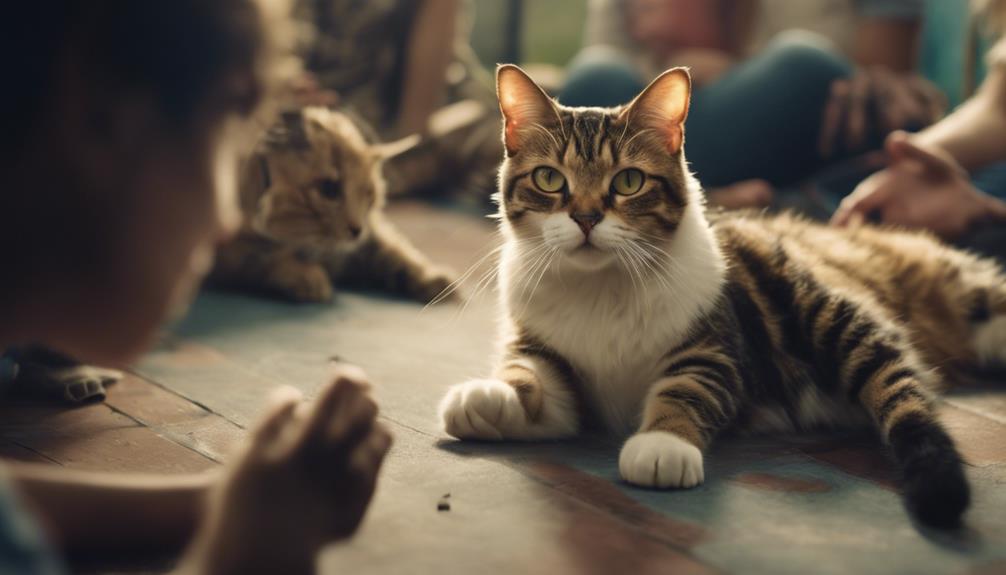
When socializing with humans versus animals, cats exhibit distinct behaviors influenced by their gender-specific socialization patterns. Gender dynamics play a crucial role in shaping how cats interact with different beings. Here are some key points to consider:
- Preference for Interaction:
- Male cats may lean more towards human interaction, seeking attention and affection.
- In contrast, female cats might display a more balanced approach, interacting with both humans and animals equally.
- Communication Styles:
- Male cats tend to use vocalizations more prominently when socializing with humans, expressing their needs and emotions.
- Female cats, on the other hand, might rely more on body language cues to communicate.
- Hierarchy Establishment:
- Male cats often exhibit dominance traits when interacting with other animals, establishing a clear hierarchy.
- Female cats may engage in more cooperative behaviors, fostering harmonious relationships.
- Play Behavior:
- Male cats typically engage in rougher play, displaying their strength and agility.
- Female cats may exhibit more nurturing behaviors, especially when interacting with younger animals.
Frequently Asked Questions
Can the Gender of a Cat Affect Its Ability to Get Along With Other Pets in the Household?
Can a cat's gender impact its ability to get along with other pets in the household? Gender dynamics play a role in social hierarchy, influencing behavioral differences and group dynamics. However, individual temperament and proper introduction are also crucial factors.
Are There Any Differences in Socialization Techniques for Male and Female Cats?
When it comes to socializing cats, handling differences between male and female cats can impact behavior modification. Socialization challenges may require tailored training methods based on gender-specific tendencies, emphasizing the need for individualized approaches for optimal results.
Do Male Cats Tend to Be More Territorial Than Female Cats?
Male cats often exhibit stronger territorial instincts compared to female cats. These gender differences can impact social behavior, as males may be more prone to marking their territory. Understanding these traits can help in managing cat socialization.
How Does the Gender of a Cat Impact Its Interaction With Children in the Household?
When it comes to gender dynamics and child interactions, a cat's behavior is influenced by socialization approaches. While some may argue that gender plays a significant role, the key lies in consistent training and positive reinforcement techniques.
Is There a Difference in the Socialization Process for Male and Female Cats When Introducing Them to a New Environment?
When introducing cats to a new environment, gender dynamics can influence socialization. Behavior differences may impact adaptability. Understanding these nuances can help create a smooth transition for male and female cats, enhancing their overall well-being.











